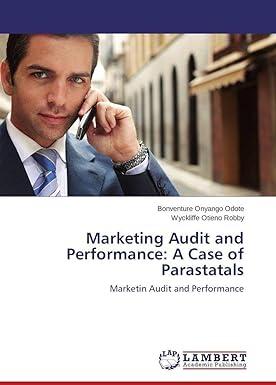Question
Company X produces 2 types of cheeses (A and B) and uses 3 types of milk on each cheese, which is getting from different farms:
Company X produces 2 types of cheeses (A and B) and uses 3 types of milk on each cheese, which is getting from different farms: goats milk from farm F1, sheeps milk from farm F2 and cows milk from F3. Farms can supply the following amounts of milk tomorrow morning: F1 18 tons at 500 EURO/ton, F2 20 tons at 800 EURO/ton and F3 30 tons at 350 EURO/ton. Company is paying the transportation cost from the farm to the factory, which is: F1 25 EURO/ton, F2 20 EURO/ton and F3 25 EURO/ton.
For the cheese production, the following amounts of milk are needed:
Cheese A (required amounts of milk in tons per cheese ton
Goat's milk 2, Sheep's milk 4, Cow's milk 1
Cheese B (required amounts of milk in tons per cheese ton
Goat's milk 2, Sheep's milk 1, Cow's milk 5
The production cost (additional machinery, labour, etc) except the cost of purchase and transportation of milk for both cheeses A and B is: c = 4,000/ton, c = 3,700/ton, respectively. Company has binding orders to send the day after tomorrow to 2 customers (P1 and P2), who are willing to purchase additional amounts at the same agreed prices. The price of both cheeses includes the transportation cost from the factory to the customer.
| Type of cheese | Customer P1 | Customer P2 | ||||
| Marginal contribution in profit ( / kilo) | Binding order (in kg) | Maximum amount to be accepted (in kg) | Marginal contribution in profit ( / kilo) | Binding order (in kg) | Maximum amount to be accepted (in kg) | |
|
| 12.00 | 1,500 | 2,000 | 11.50 | 2,000 | 2,500 |
|
| 10.00 | 2,500 | 3,000 | 10.50 | 2,000 | 2,500 |
The marginal contribution in profit is the revenue from the sale of cheeses minus the transportation cost which is paid by the company. The production is completed in 1 labour day and the company can produce up to 12 tons of both cheeses daily (in total and in whichever combination of both cheeses). The goal is the maximization of profit. You need to provide:
- Best quantities of milk which every farm should send to the factory.
- Best quantities of both cheeses which the company should produce the next day.
- Best quantities of cheeses which should be sent the day after tomorrow to each customer.
- Define the decision variables as well as their measurement units. Explain each part of the model: objective function (and its constituent parts and constraints). Create the model. No need to resolve numerically and find the best solution of the linear program but to state it in full all the functions (objective function and constraints).
Step by Step Solution
There are 3 Steps involved in it
Step: 1

Get Instant Access to Expert-Tailored Solutions
See step-by-step solutions with expert insights and AI powered tools for academic success
Step: 2

Step: 3

Ace Your Homework with AI
Get the answers you need in no time with our AI-driven, step-by-step assistance
Get Started


